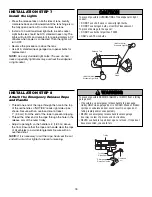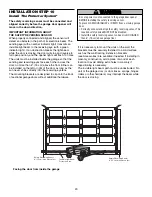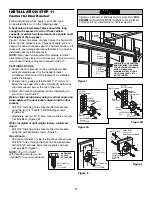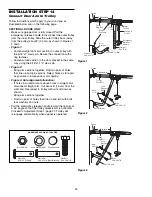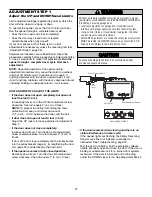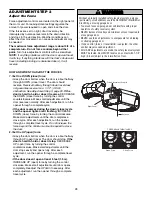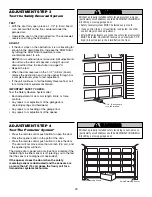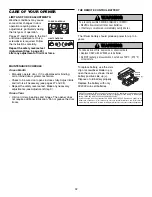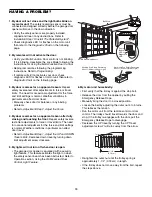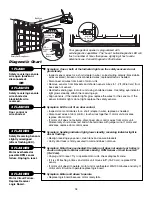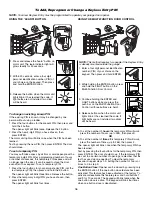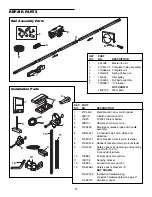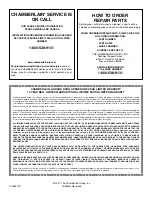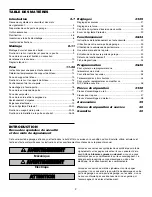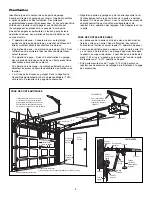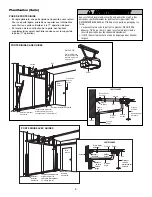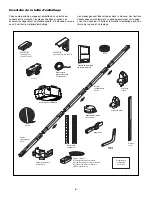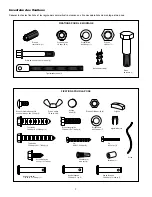
32
CARE OF YOUR OPENER
LIMIT AND FORCE ADJUSTMENTS:
Weather conditions may cause
some minor changes in door
operation requiring some re-
adjustments, particularly during
the first year of operation.
Pages 27 and 28 refer to the limit
and force adjustments. Only a
screwdriver is required. Follow
the instructions carefully.
Repeat the safety reverse test
(Adjustment Step 3, page 29)
after any adjustment of limits or force.
FORCE CONTROLS
1
3
9
7
5
1
3
9
7
5
LIMIT CONTROLS
KG
KG
MAINTENANCE SCHEDULE
Once a Month
• Manually operate door. If it is un
b
alanced or
b
inding,
call a trained door systems technician.
• Check to
b
e sure door opens & closes fully. Adjust limits
and/or force if necessary (see pages 27 and 28).
• Repeat the safety reverse test. Make any necessary
adjustments (see Adjustment Step 3).
Once a Year
• Oil door rollers,
b
earings and hinges. The opener does
not require additional lu
b
rication. Do not grease the door
tracks.
THE REMOTE CONTROL BATTERY
The lithium
b
attery should produce power for up to 5
years.
To prevent possible SERIOUS INJURY or DEATH:
• NEVER allow small children near batteries.
• If battery is swallowed, immediately notify doctor.
WARNING
CAUTION
WARNING
WARNING
To reduce risk of fire, explosion or chemical burn:
• Replace ONLY with 3V2032 coin batteries.
• Do NOT recharge, disassemble, heat above 100°C (212°F)
or incinerate.
WARNING
CAUTION
WARNING
WARNING
To replace
b
attery, use the visor
clip or screwdriver
b
lade to pry
open the case as shown. Insert
b
attery positive side up (+).
Dispose of old
b
attery properly.
Replace the
b
attery with only
3V2032 coin cell
b
atteries.
Battery
positive
side up (+)
NOTICE: To comply with FCC and or Industry Canada rules (IC), adjustment or modifications of this
receiver and/or transmitter are prohibited, except for changing the code setting or replacing the
battery. THERE ARE NO OTHER USER SERVICEABLE PARTS.
Tested to Comply with FCC Standards FOR HOME OR OFFICE USE. Operation is subject to the
following two conditions: (1) this device may not cause harmful interference, and (2) this device
must accept any interference received, including interference that may cause undesired operation.

